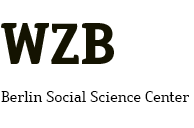RELAÇÃO ENTRE A FISIOTERAPIA E A PARTICIPAÇÃO EM ATIVIDADES SOCIAIS DO ADOLESCENTES COM PARALISIA CEREBRAL – REVISÃO SISTEMÁTICA
Resumo
INTRODUÇÃO: A paralisia cerebral é a lesão encefálica permanente que ocorre enquanto o cérebro ainda não completou sua maturação. O paciente com paralisia cerebral é classificado por onde foi a lesão encefálica, podendo ser espasticos, discinéticos, ataxicos ou mistos, ou então usar a classificação GMFCS que está relacionada a função motora bruta. Com o avanço tecnológico e da medicina tem aumentado a expectativa de vida desses pacientes, os permitindo chegar a adolescência e a vida adulta, porém, suas limitações podem dificultar o processo de aprendizagem e socialização, apesar disso, não se deve excluir tais estímulos desses jovens, pois pode gerar uma maior dificuldade em se relacionar e comunicar com terceiros, pode os privar da realização de atividade física, que é um grande provedor de benefícios. OBJETIVO: Revisar e analisar a participação social de adolescentes com paralisia cerebral. METODOLOGIA: Foi realizada uma revisão literária sistemática, onde pesquisamos através de palavras chaves pré-determinadas artigos que abordassem o objetivo deste estudo. Para isso, pesquisamos nas plataformas Pubmed, Lilacs e Scielo. RESULTADOS: Foram encontrados 30 artigos, porém, 16 entraram no critério de exclusão e 2 foram duplicidade, resultando em 12 artigos analisados e discutidos. DISCUSSÃO: Neste estudo, diversos artigos analisados usaram classificações como CIF e GMFCS, tendo ambos eficácia comprovada por outros autores, tanto para classificar quanto para acompanhar a evolução do caso. Além disso, comparamos os resultados com a participação de jovens com outras patologias e vimos que a participação deles é semelhante a dos adolescentes com PC. CONCLUSÃO: Com o aumento da expectativa de vida dos pacientes com paralisia cerebral a preocupação com a qualidade de vida e socialização surgiu. A fisioterapia irá ajudar deixando o paciente funcional para poder realizar atividades onde esse adolescente possa desfrutar do meio social, obtendo melhora na qualidade de vida, em seu emocional, bem estar e facilitando a inclusão.
RELATIONSHIP BETWEEN PHYSICAL THERAPY AND PARTICIPATION IN SOCIAL ACTIVITIES OF ADOLESCENTS WITH CEREBRAL PALSY – SYSTEMATIC REVIEW
Introduction: cerebral palsy is the permanent brain injury that occurs while the brain has not yet completed its maturation. The patient with cerebral palsy is classified by where the brain injury went, and can be spastic, dyskinetic, ataxic or mixed, or use the gmfcs classification which is related to gross motor function. With technological and medical advances, the life expectancy of these patients has increased, allowing them to reach adolescence and adulthood. However, their limitations may hinder the learning and socialization process, despite this, such stimuli should not be excluded from these young people, since they may generate greater difficulty in relating and communicating with others, and may deprive them of physical activity, which is a major provider of benefits. Objective: to review and analyze the social participation of adolescents with cerebral palsy. Methodology: a systematic literature review was carried out, where we researched through predetermined keywords articles that approached the objective of this study. For this, we researched the pubmed, lilacs and scielo platforms. Results: 30 articles were found, but 16 entered the exclusion criteria and 2 were duplicity, resulting in 12 articles analyzed and discussed. Discussion: in this study, several articles analyzed used classifications such as cif and gmfcs, both having proven efficacy by other authors, both to classify and to follow the evolution of the case. In addition, we compared the results with the participation of young people with other pathologies and saw that their participation is similar to that of adolescents with pc. Conclusion: With the increase in life expectancy of patients with cerebral palsy the concern with quality of life and socialization arose. The physiotherapy will help leaving the patient functional to perform activities where this adolescent can enjoy the social environment, obtaining improvement in the quality of life, emotional, well being and facilitating inclusion.
Palavras-chave
Texto completo:
PDFApontamentos
- Não há apontamentos.
Direitos autorais 2020 Revista UNILUS Ensino e Pesquisa - RUEP
ISSN (impresso): 1807-8850
ISSN (eletrônico): 2318-2083
Periodicidade: Trimestral
Primeiro trimestre, jan./mar., submissões até 31 de março, publicação da edição até 15 de agosto.
Segundo trimestre, abr./jun., submissões até 30 de junho, publicação da edição até 15 de outubro.
Terceiro trimestre, jul./set., submissões até 30 de setembro, publicação da edição até 15 de janeiro.
Quarto trimestre, out./dez., submissões até 31 de dezembro, publicação da edição até 15 de abril.

Este obra está licenciado com uma Licença Creative Commons Atribuição-NãoComercial-SemDerivações 4.0 Internacional.
Indexadores
Estatística de Acesso à RUEP
Monitorado desde 01 de dezembro de 2025.
Monitorado desde 22 de novembro de 2016.













